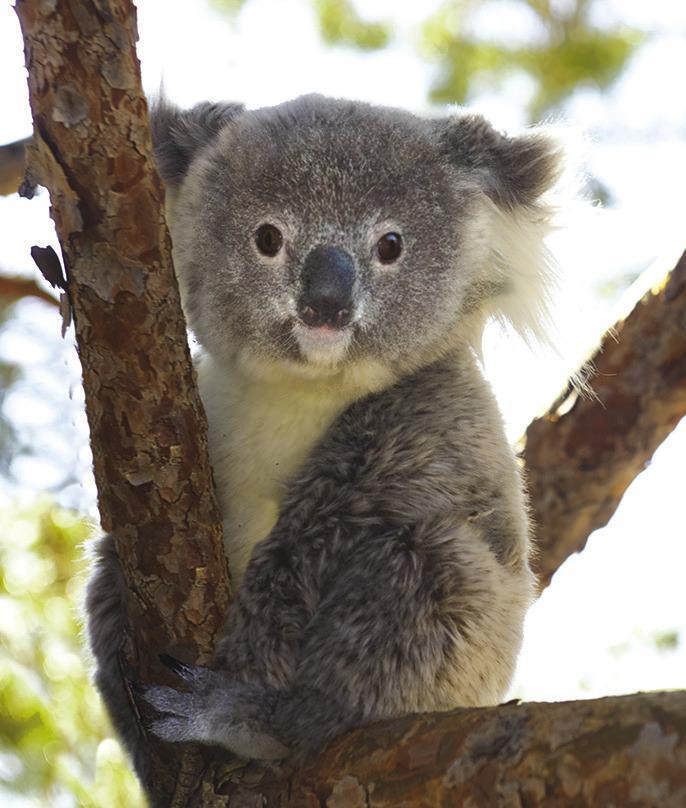
This Australian-based marsupial absorbs all of its moisture from the leaves of the eucalyptus tree. That’s some koalatee evolving.
Photo from Metro Creative

jerry hall daily record columnist
Exploring Nature: Astounding Nature
The world of nature is filled with astounding behaviors and amazing creatures.
For weird behavior, consider a bird that eats feathers.
Doesn’t seem likely, you say? Well, a mother horned grebe often feeds feathers to her chicks. She comes up with many of them from deserted duck nests and she stuffs them down the throats of her babies. She also works some feathers down her own throat. In fact, about 60% of the grebe’s diet is feathers.
Why? These feathers act as a strainer to keep fishbones from entering the intestines. This allows grebes to eat fish without fear of severe gastronomic distress.
Turning to amazing creatures, let us consider the koala. This fuzzy little teddy bear was shown to me on a trip to Australia. In fact, my wife held the little critter, about the size of a raccoon, in a hug as he peered over her shoulder in calm contentment.
One odd thing about the koala: it is one of the few animals that does not need water to supplement its food. It is perfectly adapted to one specific tree, the eucalyptus. Moisture in the leaves of this tree is sufficient so the koala can eat the leaves and skip drinking.
The koala thrives on about a dozen varieties of trees found in Australia. While it lacks a prehensile tail, it does have long claws and rough padded paws that allow it to climb about trees with ease. It seldom descends to the ground except to travel from one tree to another.
Water birds that eat feathers and a cuddly marsupial that eats leaves — just two of nature’s commodious cast of confounding critters.
Finally, let us end with a look at the short but happy life of a certain male insect. I speak of the mayfly. This winged insect lives only part of one day. It is hatched and quickly sets off looking for a female. Since it will not be around long, it does not have a mouth or a stomach.
It devotes its few hours of existence to finding a female and mating, ensuring she will be able to lay eggs to perpetuate the species.
Nature is replete with wonderful oddities that really keep things interesting.











